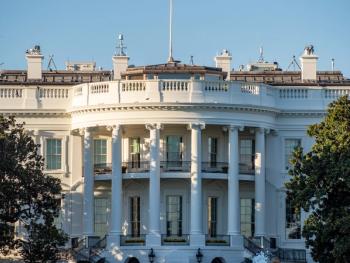
When rural hospitals close, nearby hospitals feel the pain
Researchers at Penn State examined the impact of rural hospital closures on other nearby hospitals.
When rural hospitals shut their doors, surrounding hospitals experience additional strain, researchers have found.
It’s an issue worthy of attention, since
Rural hospitals account for 35% of the nation’s hospitals, and
Researchers from the Penn State College of Medicine examined the impact of the closure of rural hospitals on other hospitals within a 30-mile radius. The
The researchers examined 53 rural hospital closures and the impact on 93 bystander hospitals. Two years after the closure of a rural hospital, emergency department visits increased by an average of 10.2%.
In the two years before the closure of rural hospitals, admissions had dropped by an average of 5.7%. Two years after the closure, admissions had increased by an average of 1.2%, Penn State researchers found.
"These findings predict a daunting future for rural healthcare," the authors wrote in the study.
Daniel George, associate professor of humanities and public health sciences at Penn State, said previous study showed the impact of rural hospital closures on the health of surrounding communities. But he said to his knowledge, this is the first study aimed at assessing the impact on nearby hospitals.
“This research confirmed a problem for the health care field that many already suspected,” George said in a statement. “The question now becomes how researchers and policymakers can develop solutions to help bystander hospitals handle increased volume.”
The researchers examined rural hospitals with more than 25 beds that closed between 2005 and 2016. Two-thirds of the closed hospitals (66%) were in the southern states, while another 21% were in the Appalachian region.
More research should be done on the ongoing impact of the closure of rural hospitals, said Jennifer Kraschnewski, director of Penn State Clinical and Translational Science Institute.
“We know rural areas, especially regions like Appalachia, are at increased risk for diseases of despair including alcoholism, accidental poisonings and suicide,” Kraschnewski said in a statement. “Increased burden at bystander hospitals and health care institutions may cause these problems to proliferate if other public health interventions aren’t identified and implemented.”
Hospitals across the country have struggled during the COVID-19 pandemic, but rural hospitals have had an especially difficult time with labor shortages, healthcare leaders say.
Rural hospitals are expected to struggle in the near future. For smaller, rural hospitals, “the future looks very dim at the moment,” Kevin Holloran, senior director at Fitch Ratings, told Chief Healthcare Executive in an
Still,
Lawmakers in the House of Representatives have introduced
The bill would extend the Medicare-dependent Hospital (MDH) program, which funds more than 170 hospitals, for five years. The program offers more assistance to smaller hospitals with a large share of Medicare patients.
In addition, the bill would also continue Medicare’s Low-Volume Hospital (LVH) designation. The program offers assistance to rural hospitals with a relatively small portion of Medicare patients, and it supports more than 600 hospitals.
A similar bill has been introduced in the Senate, with one significant difference:








































